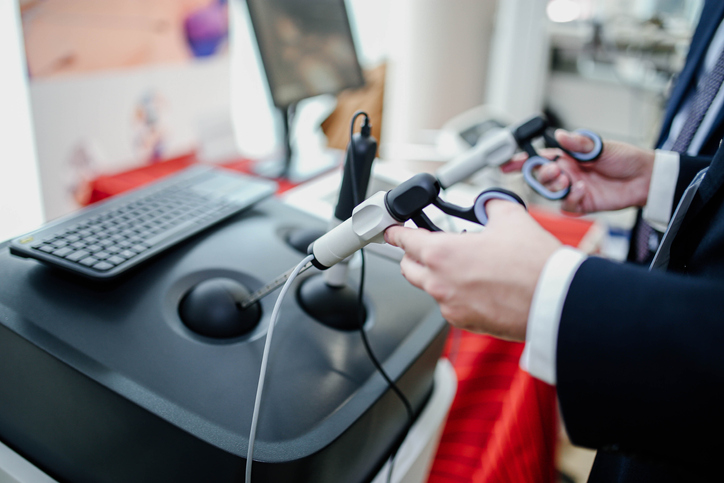Can A Child Get a UTI or VUR?: Expert Urologist Discusses
Urinary tract infections (UTI) can occur in children, as well as adults. This happens when bacteria normally living in the bladder grows out of control and irritate the bladder’s lining, causing symptoms like painful urination, having to run to the bathroom often, urine accidents, or blood in the urine.
If you find yourself asking can a child get a UTI or a VUR, keep reading below.
What Causes UTIs in Children?
In young kids, a few common behaviors can cause urinary infections. Specific behaviors that put kids at risk for UTI are not urinating often, not drinking enough liquids, and ignoring a full bladder or the urge to urinate withholding behaviors like the “pee-pee dance” or holding the genitals. Constipation also plays a huge role in UTI’s, especially in kids. It doesn’t take long for the rectum to get full in kids. With the pelvis being small, the full rectum can get in the way of the nerve signals to the brain, or in the worst cases, it can even directly pinch the bladder and make it hard to empty.
So far, the answer to our question of can a child get a UTI or a VUR is yes!
What Causes VUR?
Normally, urine made by the kidneys comes down a small tube, called the ureter, to the bladder. This is intended to be a one-way trip- once urine makes it to the bladder it can’t go back up to the kidney. Vesicoureteral reflux, or VUR, happens when urine can freely flow back and forth between the bladder and kidney. In some people, this back and forth flow of urine can cause a small bladder infection to quickly turn into a miserable kidney infection. In kids with VUR who get kidney infections, especially those that get lots of them, long term kidney damage can happen.
Sometimes the bacteria causing a bladder UTI can make their way up to the kidney, causing a kidney infection, also called pyelonephritis. These kidney infections can be very severe in some children and are most commonly signaled by a UTI with a fever. There are several reasons why kids can get pyelonephritis, but this article will focus on the most common reason, vesicoureteral reflux.
How Do You Treat UTIs in Children?
The first step in managing a UTI is to get a urine sample before starting antibiotics to see what is causing the problem and what is the best medicine. Urine samples after antibiotics may give a false negative result. In kids who are not potty trained, this is done by passing a catheter into the bladder to get a clean sample of urine. Specimen collection bags that can be taped to the groin are good for checking the urine for a lot of things, but not for checking for urinary infection as they are very, very unreliable.
For children 2-24 months old with their first febrile UTI, the American Academy of Pediatrics recommends getting an ultrasound of the kidneys and bladder to rule out major kidney problems. Further testing is not recommended unless problems are noted on the ultrasound, or until a second UTI with fever happens. At that time, your doctor will order a test called a voiding cystourethrogram, or VCUG, to look for vesicoureteral reflux or VUR. Vesicoureteral reflux is the medical way of saying urine goes from the bladder up to the kidneys. The VCUG is done by passing a small tube, called a catheter, through the urethra and into the bladder. The bladder is filled with x-ray contrast and x-rays are taken to see how the bladder and urethra look, and if contrast stays in the bladder, or goes up to the kidneys.
How Do You Treat Vesicoureteral Reflux in Children?
If vesicoureteral reflux is found after a febrile UTI, there are a few options for treatment. Sometimes a daily low dose antibiotic is started to prevent more kidney infections. In some kids, VUR will go away on its own as he or she grows. This usually takes one, two, or more years and a VCUG is repeated every year until its gone. Your doctor may be able to estimate the likelihood it will resolve in your child.
VUR can also be corrected with surgery. There are two basic approaches to surgery. First involves passing a small camera into the bladder through the urethra, and a small needle is used to inject a sugar-based substance called Deflux just under the ureter. In our hands, this stops reflux and infections 90-95% of the time. Kids go home the same day, there are no cuts, and there is typically little discomfort. Another way to fix VUR is called ureteral reimplantation. This surgery tucks the ureter into the side of the bladder and stops reflux and infections 95% of the time. It requires a small cut near the pubic bone, and kids stay in the hospital 1-2 nights. In some kids, a surgical robot can also be used to do ureteral reimplantation with similar outcomes and less pain.
There isn’t a one size fits all treatment for VUR, as each of these treatment options has its own pros and cons. What does need to happen is the prevention of kidney infections. Your doctor will go over options with you in detail to help find the best way to treat your child.
If you’d like any additional information on the question can a child get a UTI or a VUR, click here to contact any of Georgia Urology’s expert pediatric urologists.








